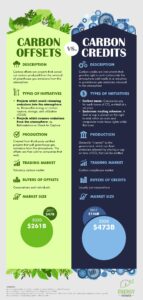Where Did Trade Carbon Credits Originate?
Trade Carbon Credits Originate
Trade in carbon credits began as a result of the Kyoto Protocol, a 1997 international agreement to reduce greenhouse gas emissions. Developed countries were granted a quota for reducing their emissions. They could sell their extra allowances to developing nations, who would in turn use the money to invest in clean technologies and land-use changes. This was meant to help the developing world while limiting the effects of global warming.
While the trade carbon credits system may be one of the best ideas for limiting emissions, it has its downsides. For example, it is difficult to predict which projects will succeed and which will fail. And the supply of good quality credits is scarce, making the price of the products hard to track. Also, the market is characterized by low liquidity and lack of risk-management services. This makes it difficult to find reliable financing for new projects.

Another major concern is the cost of producing renewable energy. A decade ago, the cost of producing renewable energy was high, but in recent years it has fallen dramatically. That has made the cost of doing business relatively lower in developing nations. However, the development of projects will need to ramp up at a faster pace than in the past. This will make it difficult for new companies to compete.
Where Did Trade Carbon Credits Originate?
In addition, some argue that many of the projects currently on the market have dubious climate benefits. This has led to banks questioning the validity of the credits. They claim that more than 60% of the credits in the market are of questionable quality.
There are a number of different kinds of carbon credits. The most common are the voluntary schemes. These are supplied by governments and private corporations. There is also a growing industry around certifying and marketing these credits.
The Kyoto Protocol was the first international agreement to limit greenhouse gas emissions. The Clean Development Mechanism (CDM) was implemented to allow industrialized countries to help the developing world reduce their emissions. Similarly, The Nature Conservancy, which is an international conservation organization, sells credits linked to land-use and environmental easements.
Aside from the aforementioned schemes, there are two other approaches. The first is the Kyoto Protocol, which was a voluntary program. The second is the Emission Trading System (ETS). ETS is a market created in 2005 by the European Union. In this system, governmental organizations regulate the sale and purchase of allowances. The ETS allows for the transfer of these allowances between countries.
The European Commission validates ownership transfers between EU members. Moreover, the European Union has banned the purchase of carbon credits from LDCs, which is a major barrier to generating more credit. The EU ETS will eventually be replaced by the Paris Accord.
Among the other approaches, the Japan Stock Exchange is set to launch a market for trading carbon credits in Japan. This is commissioned by the Ministry of Economy, Trade and Industry. It will offer a market for futures and spot carbon.